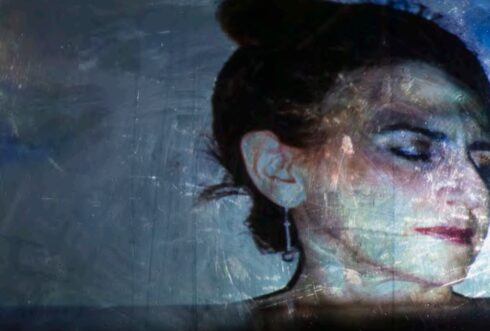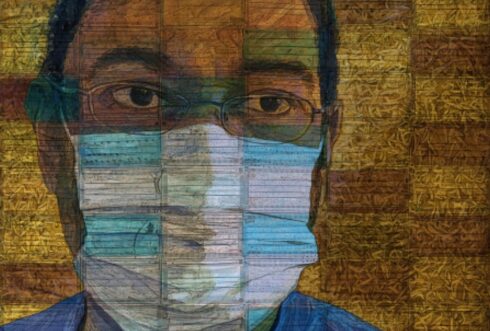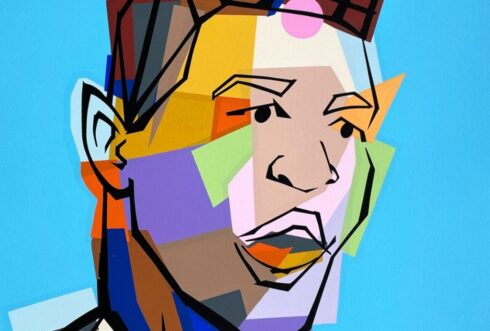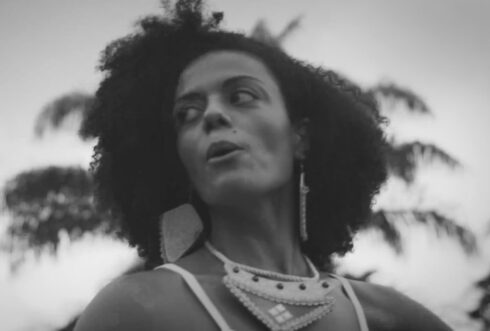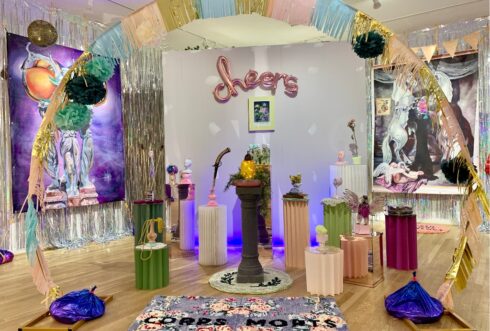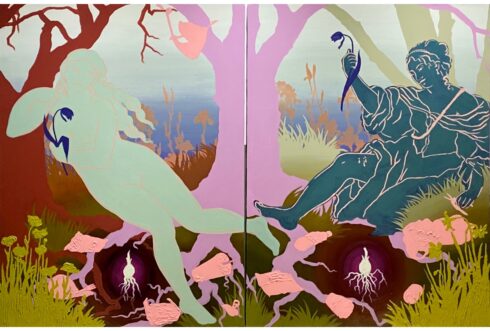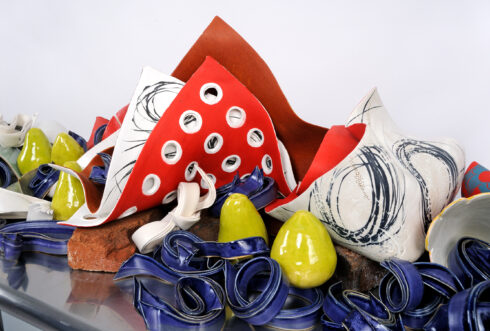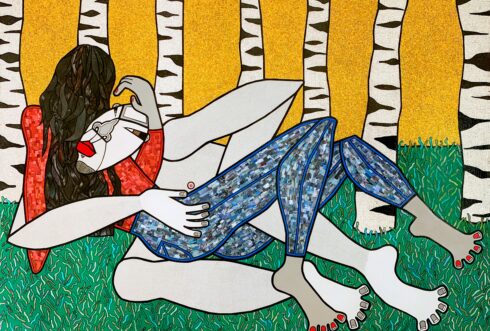Fluid Boundaries: Four Artists from the Pan-Austro-Nesian Arts Festival
Fluid Boundaries: Four Artists from the Pan-Austro-Nesian Festival
Idas Losin, Labay Eyong, Chang En-Man, Tjimur Dance Theatre
May 7 – June 26, 2022
Exhibition Description
Setting out from Taiwan, four groups of artists have come to the other side of the ocean. This exhibition, themed “Fluid Boundaries,” reflects the fluidity of artists’ self-identity, accentuating cultural characteristics that are in a constant state of flux. These groups of artists all identify with Taiwan’s aborigines. Through a quest for their own identity roots, they elaborate on their feelings in their artworks, bearing a unique interpretation of the island’s history.
In terms of linguistics, Taiwan’s aborigines are the northernmost clans of the Austronesian language, which is composed of the root words of “Austro” and “Nesian.” People from this language family have migrated with ocean currents, although not covering all ethnic groups in the South Pacific. The “Pan-Austro-Nesian” art festival, in its 2021 Taiwan debut, adopted the vocabulary of the Austronesian language and disassembled it in the hope for deeper contemplation of the history of the islands. In this sense, “Austro” is not a concept of orientation, but rather a cultural group that went through colonization and was relatively marginalized, while “Pan” symbolizes the stance for decentralization, echoing the diversity of “Nesian” in contrast to “Continent” for its connectivity to the ocean.
In “Snail Paradise Trilogy: Setting Sail or Closing Chapter,” Chang En-Man traces the path of African giant snails introduced by the colonists in a series of artistic connotations, including recipes and embroidery. Chang En-Man uses the snails of the traditional Paiwan cuisine as a metaphor for the slime traces of the snail walking, to explore involvements of the island’s history in the colonialist era, in which snails are both invaders and ingredients, reflecting the hybridity and catalysis of the cultures. Also taking the transoceanic migration as a clue, Idas Losin travelled from Taiwan many times to visit the islands in the South Pacific to personally experience the island cultures. She witnessed the impact of the rising sea levels and industrial civilization on the islands, which inspired her to paint a series of “Island Hopping Projects,” connoting artists’ persistent thinking.
Labay Eyong’s series of exhibited works “My Body is Half of a Mountain,” and “My Traditional Costumes Are Not Traditional,” manifest artists’ caring for artistic hands, land, and identity. With these two sets of artworks from different periods, Labay Eyong interprets the traditional Taroko weaving in a contemporary light, calling on the unique weaving dialogue of the tribal women, in a nostalgic feeling of the colonial past, that bears care for the ethnic heritage and yet manifests distinctive personal traits. The Tjimur Dance Theatre’s piece, “Varhung: The Body of Sound,” gets back to the quest for the Paiwan culture and poses the question: “What is dancing?” The piece uses the reverberation between the breaths of sound to reveal the inherited body rhythm of the ethnic cultures and the dialogue of contemporary people with the land.
These artworks reflect the diverse perspectives of Taiwan, whether they be urban or indigenous, mainstream or marginal, traditional or contemporary. In response to the past, these artists have proposed new insights into contemporary society through the heritage of ethnic cultures, like four independent yet interconnected islands on the same sea, where similar yet distinctive lives unfold countless interpretations and emotions, in reflection of the richness of Taiwan’s ethnic people and cultures.
LABAY EYONG
Labay Eyong is a Truku artist born in the Hongye Village of Hualien County. Her artistic creation is diverse with a wide variety of art forms such as metalwork, soft sculpture, and installation to express her indigenous identity and her pursuit of the uniqueness of her cultural roots.
IDAS LOSIN
Idas Losin is an artist from the Truku and Atayal tribes. Since 2013, she has visited Eastern Island, (Rapa Nui), Hawaii, Guam, New Zealand, Tahiti, and other places to reflect upon the art of indigenous peoples in Taiwan by observing the connections between the indigenous peoples and mainstream society abroad.
CHANG EN-MAN
Born in Taitung, Taiwan, Chang En-Man haș focused extensively on how the indigenous people of Taiwan deal with the cultural, social, and fundamental conditions they are faced with throughout the irreversible process of modernization.
TJIMUR DANCE THEATRE
Established by president and artistic director Ljuzem Madiljin in 2006 with Baru Madiljin as the dance director and choreographer, Tjimur Dance Theatre is devoted to interpreting contemporary experiences through ancient ballads. The troupe integrates song with dance and uses song as a guide for dance moves to display the exceptional bodily expressions of Paiwan culture.

